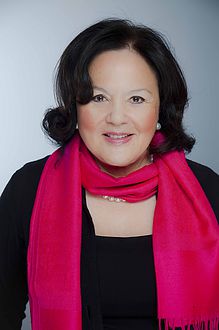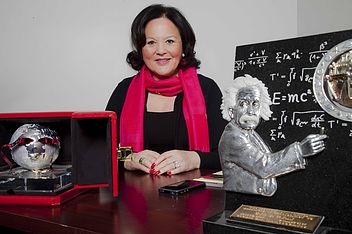ABOUT
Una Ryan is a scientist by profession and artist in her personal life. One of the foremost life scientists in the fields of vascular biology, immunology, and biotechnology, Dr. Una Ryan holds a Ph.D. in Cellular and Molecular Biology from Cambridge University and BS degrees in Zoology, Microbiology and Chemistry from Bristol University. Dr. Ryan has authored over 500 publications in vascular biology. She was most recently President and CEO of Diagnostics For All (DFA), a non-profit organization developing inexpensive diagnostics for global health and agriculture, and was also formerly President and CEO of AVANT Immunotherapeutics, Inc, (NASDAQ) a company developing vaccines and immunotherapeutics for cancer, travelers, food safety, and global health. Dr. Ryan received an Honorary Doctor of Science degree from Bristol University in 2009. In 2007, she received the Albert Einstein Award for outstanding achievement in the life sciences. In 2002, Her Majesty Queen Elizabeth II awarded Dr. Ryan the Order of the British Empire (OBE) for services to biotechnology.

“Although my whole emphasis is on the unseen world of cells and our inner world—I’m inspired by the colors of the earth as seen from outer space because in both cases, we’re looking at enormous magnification differences between the observer and the observed.
In this photographic series, I wanted to reveal how these infinitesimal living cells inside us are so beautiful and so important – and yet, from outer space, we are really so insignificant as individuals.
My artwork explores the two main questions I had as a child that set the course for my life: the first one is, “What makes us tick as humans?” And then the second one is, “What is my place in the universe?”
— Una Ryan

Artist Statement
“I want people to value their cells, for them to be captivated by the infinitesimal beauty of what keeps them alive. You get to a depth of meaning in two views of things that are not easily or routinely seen, but have very much to do with our being. What makes us tick inside? Where do we stand in the big scheme of things? I found it very compelling to put the two together.
I think resonance is the right idea. In future developments of this art, I may go beyond space. But what’s important about space, too, is that we’re very insignificant from space. And the concept that is very important about cells is that they are so unifying, you can create a picture of an endothelial cell that is relevant to just about any warm blooded, breathing, alive thing.
The message is the beauty of living beings; it’s so unifying—from the super-micro vision of cells that we all share, to the super-macro vision of this living earth and our individual insignificance (let’s not take our human selves so seriously then). Both these references are important to me, and so that synthesis in the compositions is something I have wanted to explore.”
